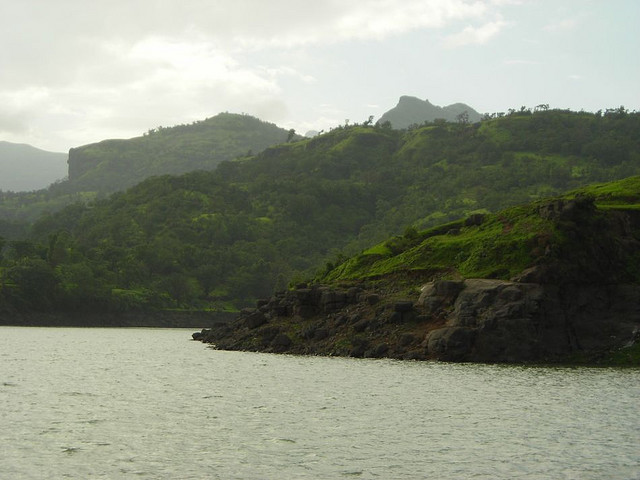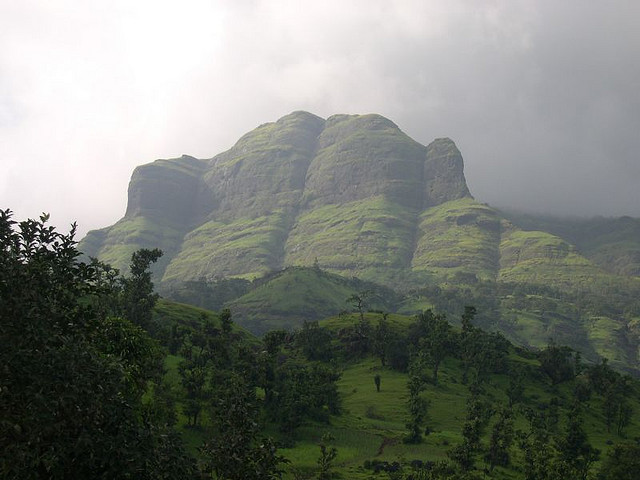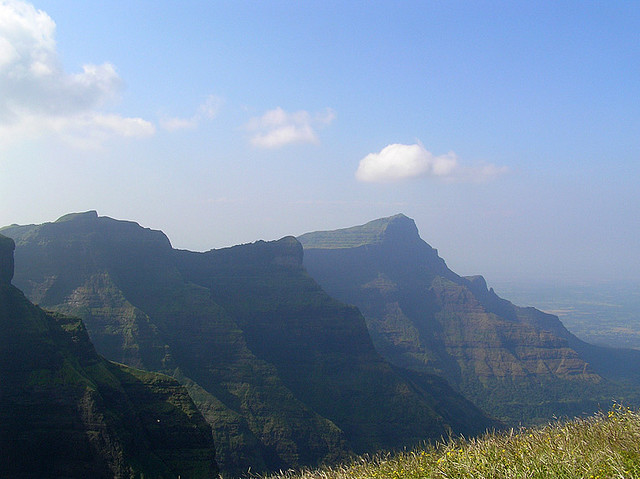Bhandardara, nestled among the Sahyadri Hills, is a beautiful secluded holiday resort located on the banks of the Parvara River. The place is a blend of natural beauty, waterfalls, mountains, tranquility, greenery, invigorating air and pristine ambiance.
http://www.flickr.com/photos/saurabhj/403639997/
http://www.flickr.com/photos/enygmatic/2931653956/



Bandhavgarh has a very deep-rooted importance of it's own in the history and mythology of India. Looming high over the entire park and located in the heart of it's core area, is a fort dating back to the mythological era of Rama and Hanuman from the Hindu epic Ramayana. It is said that the two monkeys who created the "setu", or bridge, between India and Lanka to enable Rama to cross over and vanquish the demon king, Rawana, were also the architects of the Bandhavgarh fort. This fort was used by Rama and Hanuman on their journey back to their kingdom from Lanka. This fort was later handed over by Rama to his brother Lakshmana who came to be known as the "Bandhavdhish", lord of the fort.
This title is still used by the Maharaja of Rewa, who even presently owns the fort. It is thus necessary to procure his permission before entering the fort. This permission can however be obtained locally. In the northern areas of the park is where you will come across the oldest indicators of bygone eras. These are caves dug into sandstone and carry "brahmi" inscriptions dating back to the 1st century BC. The Chandela kings of bundelkhand, who are famous for the Khajuraho Temples built by them, also ruled Bandhavgarh. The ancestors of the Maharaja of Rewa were the Baghela Kings who started their rule here in the 12th century. Bandavgarh was the capital of their dynasty till 1617 after which it moved to Rewa, which was 120 km to the North. Due to this moving of the capital, Bandhavgarh went through a period of neglect in the times to follow. This was in one way a boon for the present forest present there.
Once this area got taken over by forest cover, the animals in the area too began to multiply. The negative aspect to this was that the royal family and their guests started using it as a hunting reserve. This continued until the Maharaja decided to hand it over, minus the area inside the fort, to the government.
By Air: Nearest airport is Chatrapati Shivaji International Airport, Mumbai, which is nearly 185 km from Bhandardara.
By Rail: Nearest Railway station is Igatpuri, which is nearly 35 km away from Bhandardara.
By Road: Maharastra state road transport bus services are available up to the down hill. Most of the major cities in the state including Mumbai are connected to Bhandardara by bus.
Fishing: The shores of the lake are an excellent to try for angling. One can see large fish in there and if one has a combination of forbearance and luck, they will bite. Tourists can either go at casting or spoon fishing. But boats are not allowed to be used.
Only a bit of a grey area is allowed for fishing. But casting a line on the river and the lake is been done and nobody seems to take notice of it. Fly fishing or casting can be done at the pools which is at the bottom of the falls.
Trekking: Trekking is the most popular activity in Bhandardara. Those who are physically fit can hike up to Mount Kalsubai, at a height of 5400 ft, overlooking Chandardara. The peak is the highest in the region. Ratanwadi can be covered en route.
Mount Kalsubai in Bhandardara with its height is the ideal place for trekkers. The hills nearby are also an excellent place for trekking.
To trek to the highest peak in Maharashtra can be physically demanding. As the region of Bhandardara is itself located on the hills, visiting the place itself is pretty much a trek.
Also the Ratangad Fort at Bhandarkara has grounds for trekking lovers. One can challenge their physical stamina by trekking on the grounds.
